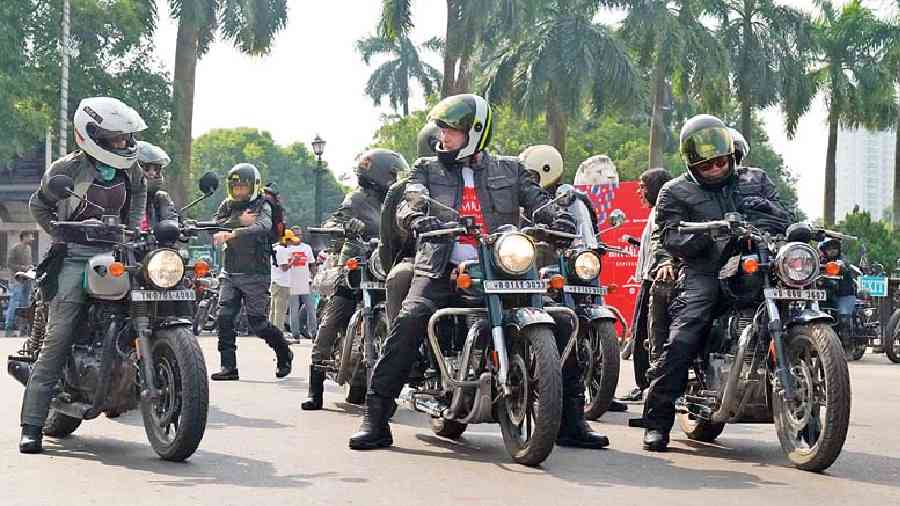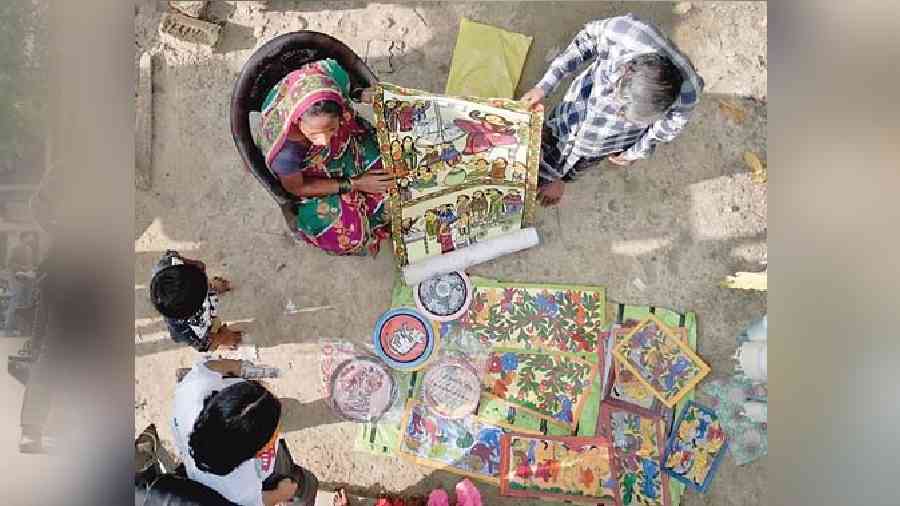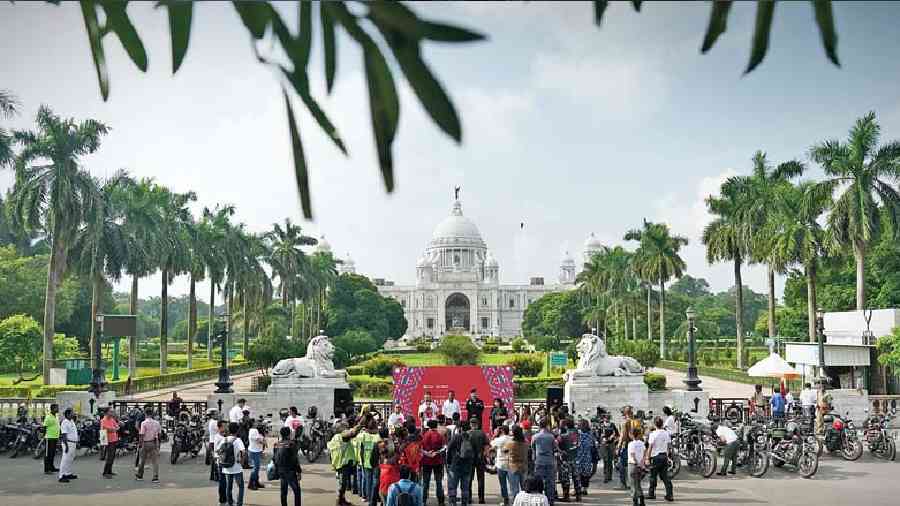While West Bengal basked in the glory of the first Durga Puja after being inscribed on the United Nations Educational, Scientific and Cultural Organisation (Unesco)’s Representative List of the Intangible Cultural Heritage of Humanity, a group of bikers scoured the Northeastern states on their bikes in a bid to document more intangible cultural heritage practices there.
The Great Himalayan Exploration was flagged off on Puja eve in Kolkata as part of the partnership between Unesco and Royal Enfield, the world’s oldest motorcycle brand in continuous production since 1901. The riders, including a team of more than 20 rider-researchers, travelled that day to Pingla, over 100 km away in West Midnapore, to visit Naya village where a Patachitra Folk Art Centre has been developed as part of Rural Crafts Hubs, a project supported by the Unesco and the department of micro, small and medium enterprises and textiles, government of West Bengal.
Before their trip, the director and Unesco representative to Bhutan, India, the Maldives and Sri Lanka, Eric Falt addressed them on the aim of the project, what to expect in Pingla and what not to do. “Don’t be high and mighty. Those villagers perhaps have travelled more than you have — many have been to festivals in Germany, Japan and elsewhere in the world — but you will see them in their local environment and they do not brag about it,” he told them.

The riders all set to start
Falt expressed confidence that it would be a “life-transforming” visit. “I am sure many of you will be transformed by the ride. Some practices, like Durga Puja, don’t need Unesco’s help. It’s a wonderful tradition which is not threatened in any way. But some do need help. We are at a crucial point in history when many traditions are disappearing. Your grandparents saw some practices which you have not, or some which you may have seen in your childhood but not any more. We have a window of opportunity of 20 years before many more such practices will disappear. It is very important to give support to these practices, to recognise and promote them,” Falt told the riders at the pre-departure briefing.
Speaking to The Telegraph, Bidisha Dey, executive director, Eicher Group Foundation, the CSR arm of Royal Enfield, explained how the idea germinated. “We have been organising rides for many years, particularly to the Himalayas, which is our spiritual home. We are blessed to have a community of riders. Often we noticed that the riders came back with interesting stories of how they interacted with the community. We were putting together a plan on how to get the riders interested in partnering with us to support these communities in a meaningful way that includes ecosystem regeneration, looking at livelihoods etc when we met Eric. He talked about intangible cultural heritage and we could see how this could become an interesting proposition for riders.”
As part of the experience, the team was given a tour of the village in Pingla and the resource centre where the painters showcased the techniques they use to create the dyes and paint, as well as how patachitra is used as a prop and a backdrop for their folk songs.

The chitrakars demonstrate Patachitra to the riders in Pingla.
The bigger plan
The ride to Pingla and the tryst with the chitrakar community was just the beginning. Thereafter, the rider-researchers flew out to Guwahati where they split into three groups and headed towards Meghalaya, Assam and Ziro in Arunachal Pradesh, spending two weeks documenting specific Intangible Cultural Heritage practices that have been identified by a research team, in collaboration with Unesco. This will be followed by a series of research-based rides across the Himalayan region in the next few months to document these practices. The goal, according to Royal Enfield officials, is to create a digital repository of the information that the rider-researchers will collect.
“We are beginning with 100 intangible cultural heritage practices in the eastern part of the Himalayas. When you start looking, 100 is actually a small number. If you look at just Arunachal Pradesh with the number of tribes and practices that they have, you will find with a little bit of research, the number can really explode,” said Dey.
Between now and December, Dey hoped the riders would be able to cover more than 90-odd practices. “Some will still be left because they are linked to seasonal practices. So we may be coming back again when the time is right, around harvest season in April.”
“This is a pioneering project that goes to the roots. We want to explore areas where there is almost no information. Nobody has gone to the Northeast and tried to document these practices in writing or visually. It is a contribution to the collective knowledge concerning ICH in the Northeast,” Falt said.
Describing it as a long-term project, Dey said the process of identifying practices in the Western Himalayas would start in a couple of months. “The rides will commence in the Western Himalayas June onwards, once Ladakh opens up.”
The activity, officials said, was a stepping stone to Royal Enfield’s larger goal of partnering with 100 communities across the Himalayas by 2030 to help them adopt sustainable living practices and become resilient in the face of climate change. For this, they plan to enable one million members of its global motorcycling community to act as agents of change and help regenerate iconic landscapes like the Himalayas and the communities in them.
